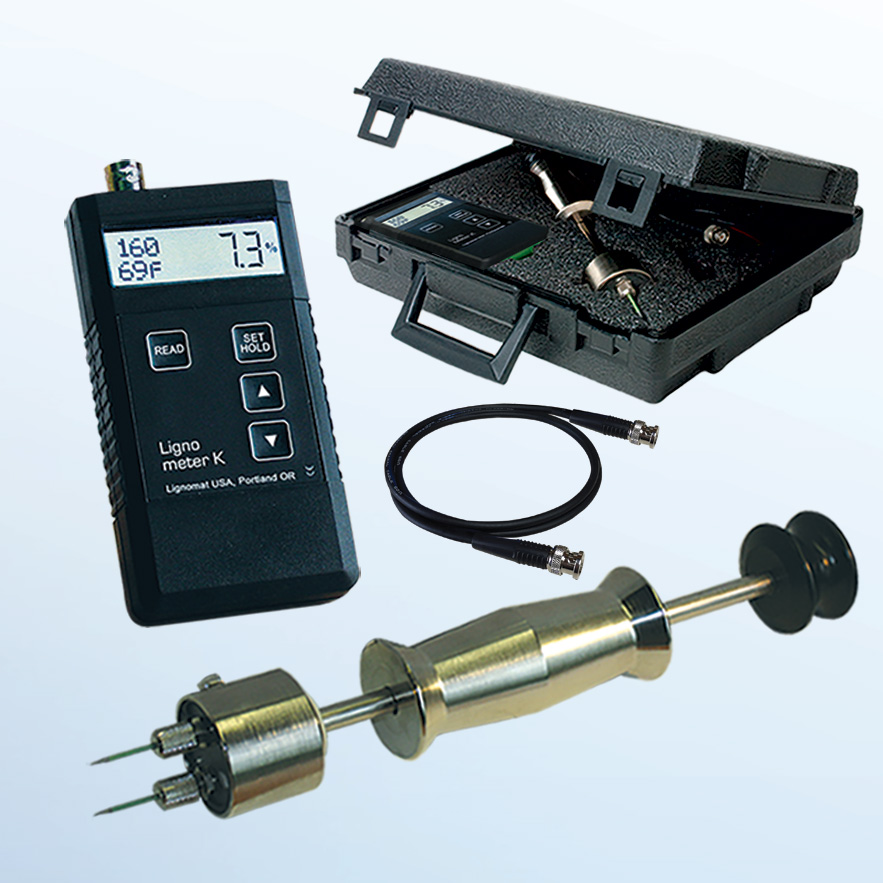The Scientific Research Behind Moisture Meters: How They Function and Why They're Necessary
Explore the World of Moisture Meters: Everything You Required to Know
In the world of wetness meters lies a globe of precision and functionality that usually goes unnoticed. Understanding just how moisture meters run, the different kinds available, and their varied usages can shed light on their value in ensuring high quality and effectiveness.
How Moisture Meters Work
Moisture meters operate by measuring the electric conductivity or capacitance of products to figure out the moisture material existing. These meters are invaluable devices throughout different markets, consisting of building, woodworking, and farming. By making use of different approaches such as pin-type or pinless technology, wetness meters provide precise analyses that assist specialists make informed decisions.
Pin-type dampness meters work by placing the sharp pins into the material being evaluated. On the various other hand, pinless moisture meters use electromagnetic signals to check a larger location without causing any damage to the product's surface.
No matter the approach used, wetness meters play an important role in preventing problems such as mold development, structural damages, or item defects triggered by excess moisture. Understanding just how these meters job is essential for making sure the quality and honesty of products in various applications.
Types of Moisture Meters
Offered the crucial duty dampness meters play in different industries, it is important to understand the different kinds offered to professionals for precisely assessing dampness levels - Moisture Meter. There are largely two main kinds of wetness meters: pinless and pin-type wetness meters

On the various other hand, pinless wetness meters use electro-magnetic sensing unit plates to check a larger area of the material without triggering any kind of damages. This type is suitable for quickly scanning big areas and is generally made use of for flooring, walls, and ceilings. Pinless meters are hassle-free for taking analyses on completed surfaces without leaving any noticeable marks.
Both kinds of moisture meters have their benefits and are picked based on the specific needs of the work handy. Understanding the differences between these kinds is critical for experts to make precise moisture analyses.
Applications Throughout Industries
With diverse functionalities, moisture meters locate extensive application across various sectors, helping experts in making certain optimal conditions for materials and frameworks. In the agriculture industry, wetness meters are invaluable for figuring out the dampness web content in grains, seeds, and hay, guaranteeing quality assurance and preventing mold growth. Building experts depend on dampness meters to analyze the moisture degrees in structure products like drywall, concrete, and timber, which is important for maintaining structural integrity and avoiding issues like rot or mold and mildew. The floor covering market uses dampness meters to gauge the dampness web content in subfloors prior to mounting various Recommended Reading flooring coverings, protecting against costly problems as a result of excess moisture. Moreover, in the food sector, dampness meters are utilized to keep an eye on and manage moisture levels in items such as grains, nuts, and dried out fruits to preserve freshness and quality. In addition, wetness meters play an important role in the reconstruction and damage assessment sector by assisting professionals recognize and attend to water damages in buildings without delay. Throughout these diverse industries, moisture meters are crucial tools for ensuring the high quality, safety, and long life of various products and products.
Tips for Utilizing Dampness Meters
When gauging the dampness content in various materials,Use the dampness meter's calibration setups to ensure precise readings. Calibration is critical for the correct functioning of a moisture meter. Before each use, it is recommended to inspect and change the calibration settings according to the certain product being checked. In addition, see to it the meter is readied to the proper dampness array for the product you are gauging to get one of the most specific results.
When making use of a pin-type dampness meter, place the pins to the suitable depth recommended for the product being checked. This makes sure that the moisture readings are extracted from the right depth within the product, giving a much more accurate depiction of its wetness material. For pinless moisture meters, bear in mind to preserve proper call with the material's surface to obtain trustworthy readings.
On a regular basis check and change the batteries in your moisture meter recommended you read to avoid incorrect analyses because of reduced power. When not in usage to prolong its life expectancy and keep its accuracy, Shop the meter in a safe and dry place. By adhering to these tips, you can take full advantage of the performance of your dampness meter and get accurate wetness web content measurements across various products.
Upkeep and Calibration
To make certain the precision of dampness web content dimensions, normal upkeep and calibration of the wetness meter are necessary actions in its appropriate functioning. Calibration adjusts the moisture meter to ensure that it provides trusted and regular outcomes.
Calibration must be carried out periodically, specifically if the moisture meter is made use of often or in vital applications where precise dimensions are required. By calibrating the wetness and maintaining meter regularly, individuals can rely on the accuracy of the dampness material dimensions obtained.
Final Thought

Finally, dampness meters play an important duty in different markets by precisely gauging the moisture material of products. Recognizing how these tools work, the various kinds available, and proper maintenance and calibration are vital for acquiring dependable results. Whether in building browse around here and construction, production, or farming, the usage of moisture meters aids guarantee quality control and effectiveness in procedures.

In conclusion, wetness meters play an important role in various industries by properly determining the moisture web content of products.